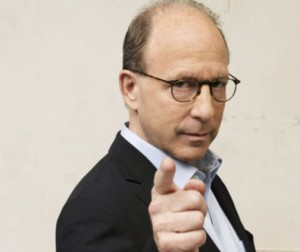Ah, the art market can inspire contempt like almost no other commodity market. Morley Safer made that clear, again, on tonight’s 60 minutes as he updated his 1993 report on contemporary art’s value, “Yes…but is it Art?” with a televised trip to Art Basel Miami, “Even in Tough Times, Contemporary Art Sells.” A short time after Safer broadcast his skeptical overview, renown critic, Jerry Saltz, was on his blog with an equally contemptuous response that sparked tweets and citations galore, “Jerry Saltz on Morley Safer’s Facile 60 Minutes Art-World Screed”. Whereas Safer described Art Basel Miami as an upscale flea market likening art to oil, soybeans or pork-bellies and offering images of works he described as kitsch, cute, clumsy, and incomprehensible. Saltz’s response describes Safer as snarky, bullying, repetitive and disdainful, full of cliches and woefully lacking of knowledge or experience with contemporary art. Both gentlemen unfortunately are speaking a different language, and while appearing to address one another (Safer to Saltz’s profession, Saltz to Safer’s broadcast), neither seems to really get at the root of the others’ argument.
Describing the environment of the grand Miami art fair as an example of the hundreds that take place yearly and that facilitate billions of dollars in revenue for profitable art galleries, Safer as a lay person decries the impossibility of “an aesthetic experience” due to the woeful lack of silence or space in the presentations. In fact, Safer never describes himself as an expert in contemporary art but plays the role instead of the everyman, aghast at the extravagance and pondering the purposefulness of this strange marketplace. Saltz, however, responds to Safer’s naivete in expecting “an aesthetic experience” and asserts that his lack of such an experience is due not to the circumstances of the fair but to the  underlying fear in his approach. Saltz goes on to describe impassioned viewer experience, both its portals and its results, personifying art (“art wants attention,” “Art isn’t something that only wants love”) and asserting its powerful influence on a willing audience, “something that makes us uncomfortable, that tells us things we don’t want to know, that creates space for uncertainty.” On Safer’s expectation of an aesthetic experience attending Art Basel Miami, Saltz describes the journalist as “clownish” saying, “Safer goes to the most hellish place on earth to look for ‘an aesthetic experience.'” Is it really so absurd to expect that a subject matter as powerful as Saltz describes would be displayed to its full advantage? These ubiquitous fairs dictate the market as much as modern taste and I for one am delighted to consider the ramifications of such disruptive viewing spaces in influential marketplaces on the enduring culture of the art world. Whereas Saltz claims that “there are no ‘gatekeepers’ in the art world anymore, that it’s mainly a wonderful chaos,” I would assert that the art world’s gate-keepers do in fact exist and are unduly influenced by the marketplace as business leaders and financiers take control of museums and art institutions rallying boards toward numerical rather than cultural measure of success. Museums build collections on the backs of these billionaire enthusiasts that Safer describes.
underlying fear in his approach. Saltz goes on to describe impassioned viewer experience, both its portals and its results, personifying art (“art wants attention,” “Art isn’t something that only wants love”) and asserting its powerful influence on a willing audience, “something that makes us uncomfortable, that tells us things we don’t want to know, that creates space for uncertainty.” On Safer’s expectation of an aesthetic experience attending Art Basel Miami, Saltz describes the journalist as “clownish” saying, “Safer goes to the most hellish place on earth to look for ‘an aesthetic experience.'” Is it really so absurd to expect that a subject matter as powerful as Saltz describes would be displayed to its full advantage? These ubiquitous fairs dictate the market as much as modern taste and I for one am delighted to consider the ramifications of such disruptive viewing spaces in influential marketplaces on the enduring culture of the art world. Whereas Saltz claims that “there are no ‘gatekeepers’ in the art world anymore, that it’s mainly a wonderful chaos,” I would assert that the art world’s gate-keepers do in fact exist and are unduly influenced by the marketplace as business leaders and financiers take control of museums and art institutions rallying boards toward numerical rather than cultural measure of success. Museums build collections on the backs of these billionaire enthusiasts that Safer describes.
The art market profoundly affects museums and cultural institutions, and, yes, even art history and is therefor desperately important and needs desperately to be criticized loudly and roundly by all audiences, educated in the field or not. Rather than being offended by the repetition of a thematic broadcast, I do see the need to update the story twenty years later and am surprised by the differences more than upset by the similarities. Saltz describes Safer’s general intent, “Safer was on about art fairs, artspeak, high prices, collecting as conspicuous consumption, Russian oligarchs who throw money around, and the ugliness of the market: endemic stuff we all know about and dislike.” Yes, Safer does repeat and repeat his arguments, with metaphors like the “emperor’s new clothes” emanating from his mouth multiple times in each broadcast. At the same time, however, I was struck by the observations he culls from dealers like Jeff Blum who describes his industry as “an unregulated, utterly bizarre place to conduct business. Literally a multi-billion dollar economy…. [where] competition between dealers and artists is often vicious.” This is not often admitted in the ivory towers of art appreciation, but what sells is shown, what is shown is collected, what is collected is revered, what is revered influences, what influences is replicated. And there is really no regulation or oversight in the whole shebang.
Saltz calls this point, “stating the obvious” but if it is so obvious, why isn’t he more upset by it? He claims that Safer is “focused on the distraction… [and] fails to see that cash simply does what other cash does and collectors basically buy what other collectors have already bought. He is … spotting the obvious.” Rather than taking this important aspect of the market and engaging in a discussion of why that might be a [BIG] problem, he gives Safer advice as he would to any other novice trying to understand contemporary art, go to lots of galleries and refine your taste. Well, yes, I love that advice, and, yes, everyone should in a perfect world do that before they criticize contemporary art, but unlike his first broadcast, the journalism in this piece was more nuanced. In the ’93 piece Safer engages in the ridiculous, “a child could have painted that” pandering whereas in this new piece he really focuses more on the distractions, regulations, and tropes of the marketplace itself rather than on the validity of the works. I only wish that a brilliant, knowledgeable, and witty writer like Jerry Saltz had engaged in a real discussion about the importance of the market to the culture of art and the enduring history of the craft rather than, yet again, defending the taste of curators and dealers.
We’re with you Jerry, we agree with what you are saying, now put your talents toward trying to really analyze, and possibly make a difference in these endemic faults you claim are disliked yet you seem to fully accept!
What did you think of the 60 minutes broadcast?
Pingback: The Corporate Museum | LA Art Theory